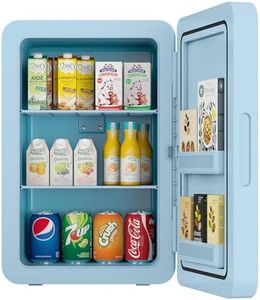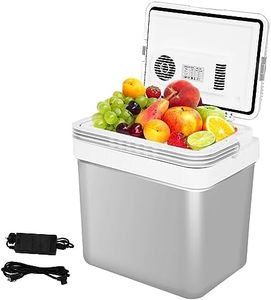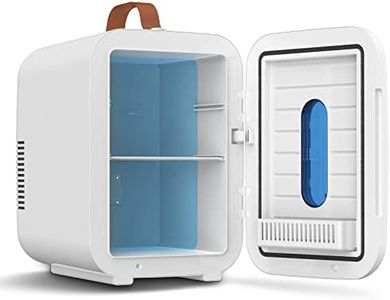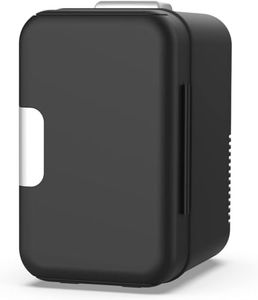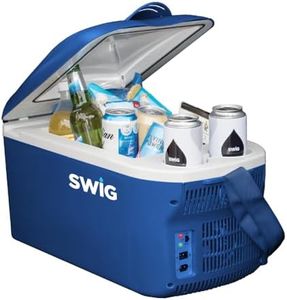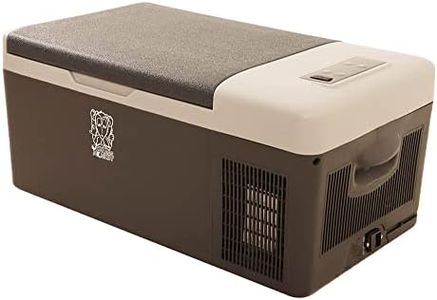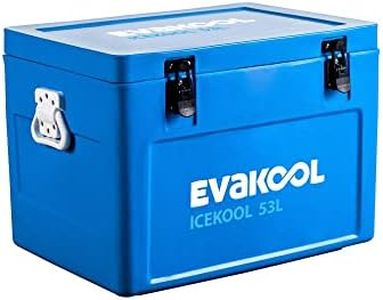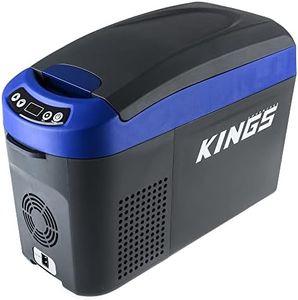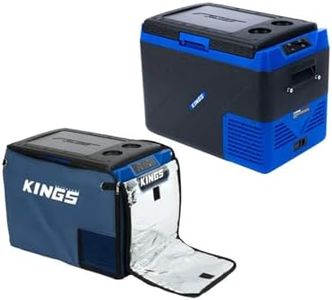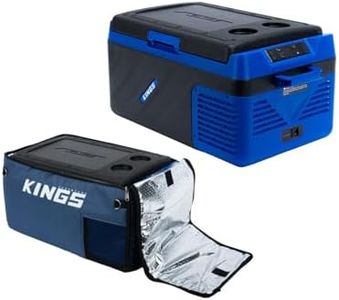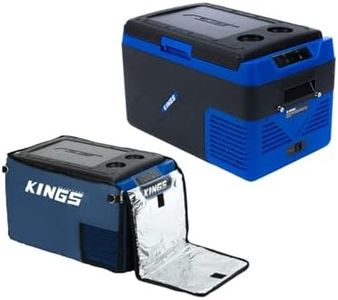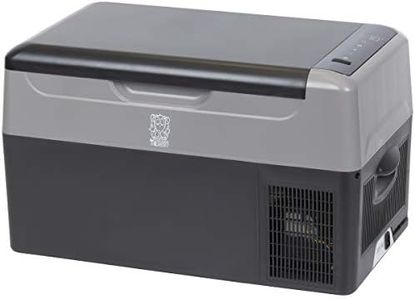We Use CookiesWe use cookies to enhance the security, performance,
functionality and for analytical and promotional activities. By continuing to browse this site you
are agreeing to our privacy policy
10 Best Portable Fridges
From leading brands and best sellers available on the web.Buying Guide for the Best Portable Fridges
Choosing a portable fridge is all about understanding how you plan to use it and where you'll be taking it. Whether you're heading out for a camping trip, a long road journey, or just need to keep drinks cool at a picnic, matching the features of the fridge to your needs will ensure you keep your food and beverages fresh and safe. Pay attention to size, power, cooling performance, and how easy it is to move and use, as these will have the biggest impact on your experience.CapacityCapacity indicates how much the portable fridge can hold, usually measured in liters or quarts. This is important because it directly affects how much food and drink you can store. Small fridges (10-20 liters) are great for individuals or very short trips, while medium units (20-40 liters) suit couples or small families on multi-day adventures. Larger fridges (45 liters and above) are best for bigger groups or longer travels. To pick the right capacity, think about how many people you’ll be serving and how long you want to go between restocking.
Power SourcePortable fridges can run off different power sources like your car’s 12V socket, standard wall outlets (AC), or even solar panels. This matters because it determines where and how you can use your fridge. Some models work on only one type of power, while others are more flexible with multiple input options. If you plan on using it in a car or boat, ensure it works with 12V DC. For versatility during travel and at home, look for models that handle both AC and DC inputs. If you’ll be off-grid, a fridge compatible with renewable sources might suit you best.
Cooling PerformanceCooling performance describes how cold the fridge can get and how well it keeps its temperature, regardless of the weather. Some fridges act more like coolers—only getting a bit cooler than outside—while others are true compressors that can act like a household fridge or freezer. Simple thermoelectric models lower the temperature a few degrees below ambient and are fine for short trips or mild weather. Compressor models are better for extended trips or hot climates, as they reach much lower temperatures and can even freeze items. If you’re storing perishables or medicine, reliable low-temperature performance is key.
Energy ConsumptionEnergy consumption tells you how much power the fridge uses, which is crucial if you’re running it from a battery or solar setup. Higher efficiency means the fridge will last longer on the same power supply. Generally, compressor fridges use less power to give more cooling, making them suitable for longer outings. Thermoelectric and absorption types can use more, which may be fine for occasional or short-term use. Consider how long you’ll need to run the fridge and what power sources you’ll have when choosing based on energy consumption.
Portability and WeightPortability concerns how easy it is to move and carry the fridge. This includes its weight (especially when full) and features like handles or wheels. Lighter and more compact fridges are easier to transport but may trade off storage space. Larger fridges often have wheels or sturdy handles to help with moving them around. If you’ll be frequently lifting the fridge in and out of vehicles or carrying it over distances, prioritize a lighter, more ergonomic model.
User Controls and FeaturesThe controls and added features of the fridge can make a big difference in your convenience and comfort. Basic models may just have a simple dial or switch, while others come with digital displays, temperature control, battery monitors, or even smartphone connectivity. More advanced controls help you precisely set the temperature or monitor battery health, which is handy for sensitive food or longer trips. Decide which features actually improve your experience—simple controls are often easier for basic needs, while added tech helps with monitoring and optimization during extended use.
Durability and Build QualityDurability is about how well the fridge stands up to travel, knocks, and the elements. This matters because portable fridges are often used in rugged conditions—shops will offer different build materials, from lightweight plastics to tougher metals. If you expect rough handling or exposure to the outdoors, look for robust construction and waterproof or dustproof features. For mostly indoor or gentle use, a lighter, less rugged build may suit you and be easier to move.
